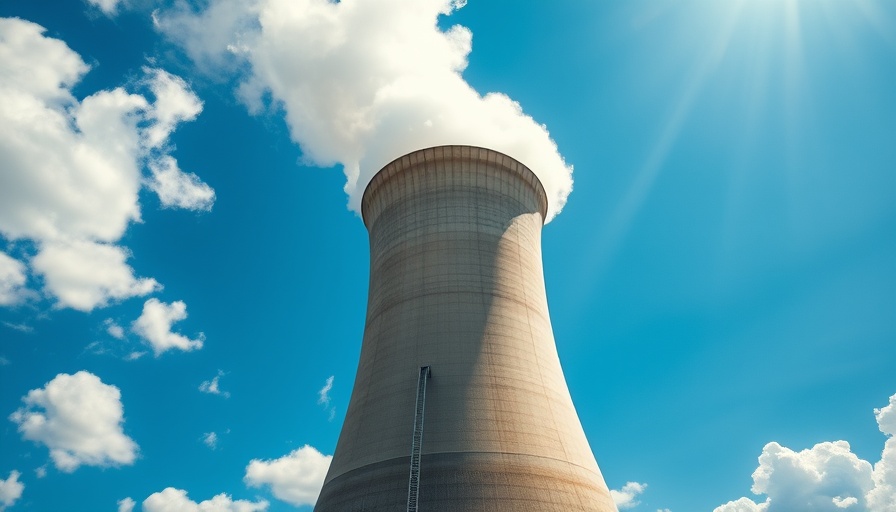
Introduction: The Nuclear Company's Ambitious Leap
In a bold move to tap into the growing demand for energy, The Nuclear Company has successfully secured $51 million in Series A funding to develop massive reactor sites aimed at producing significant energy output. This endeavor is not only a testament to the potential resurgence of nuclear energy but also reflects a broader trend where startups are taking innovative approaches towards sustainable energy solutions.
Understanding The Funding Landscape for Startups
Fresh off its recent funding round, The Nuclear Company represents a successful case study in the complex landscape of startup funding. Securing $51 million isn't just about the dollars; it's about credibility within an industry that has seen fluctuating confidence. Startups in various sectors, including technology and energy, need to navigate funding options such as venture capital, government grants, and business startup loans. Examples like Google’s investment in nuclear startup Kairos illustrate how even tech giants are keen on diversifying their energy sources.
Addressing the Energy Crisis with Innovative Startups
The importance of The Nuclear Company’s work cannot be understated, especially as the demand for electricity in the U.S. is projected to surge nearly 16% by 2029 due to the explosive growth of data centers. Traditional energy sources are facing tougher competition from solar power innovations. Yet, nuclear energy offers a stable and scalable solution that can potentially complement renewables, securing a more reliable energy future.
Historical Context: Why Nuclear Power is Back on the Table
Nuclear energy was a cornerstone in the U.S. power landscape until safety concerns and operational costs forced many plants into quiet retirement. Recent advancements and a refreshed focus on climate concerns have sparked renewed interest. As more states reconsider their clean energy ambitions, companies like The Nuclear Company can play a vital role in redefining the future of energy in America.
The Challenges of the Nuclear Market
Despite its strengths, the nuclear industry faces considerable challenges. The existing competition from solar and wind technologies must not be overlooked. Additionally, the complex regulatory landscape, high initial investment costs, and public perception can hinder advancements. Understanding these dynamics is crucial for startups looking to enter the energy sector, highlighting the need for effective strategies and adaptability.
Future Predictions: What's Next for Energy Startups?
Looking ahead, the future appears promising yet challenging for startups in the energy space, especially those focusing on nuclear power. With increasing demand for reliable energy sources amidst climate concerns, successful business startups in this niche will have to innovate continually. Thought leaders predict more collaborations between tech giants and energy startups, focusing on hybrid solutions that leverage both nuclear and renewable energy sources. This symbiotic approach is likely to foster a new era of energy innovation.
Doing Your Part: Lessons for Aspiring Entrepreneurs
The story of The Nuclear Company serves as an inspiration to aspiring entrepreneurs. Whether you’re looking into business startup ideas or exploring pathways to secure funding, the key takeaway is the uniqueness of each venture. Startups need to be proactive about their funding options, leverage existing market needs, and remain receptive to collaboration within their industries.
Conclusion: Implications for Aspiring Business Owners
As revealed through The Nuclear Company's journey, navigating startup funding can be a complex yet rewarding endeavor. For aspiring entrepreneurs in the energy sector, seizing opportunities to innovate and partner with established players can lead to meaningful advancements. Startups can gain valuable insights from this changing landscape, allowing them to position themselves successfully in the competitive market. Explore further into this dynamic world of innovation and consider how your ideas could contribute to the growing needs in sustainable energy.
 Add Row
Add Row  Add
Add 



Write A Comment